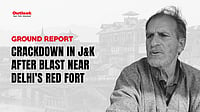The classic debate between the harm-reduction and punitive -deterrence approaches is playing out in the plains of Punjab, bringing to the open how the second approach makes a mess of efforts to address drug abuse. Recent crackdowns have targeted the distribution of drugs used in deaddiction programmes to slowly wean away addicts from their addiction, as well as the doctors prescribing them. Approved drugs like buprenorphine, a synthetic opiate, are provided in carefully calibrated and progressively lower doses that alleviate withdrawal symptoms of addictive opioids such as heroin and morphine, enabling addicts to beat the craving for the substance. The crackdown on heroin and other narcotic drugs since 2014 had forced hundreds of addicts to queue up at the doctors’ doors, mostly of private practitioners, for the treatment of withdrawal symptoms.
Buprenorphine, a “controlled psychotropic” drug under the Narcotics Drugs and Psychotropic Substances (NDPS) Act, 1985, is also a “schedule H” drug under the Drugs and Cosmetics Act. So, while distribution and manufacturing need to be regulated, it can be procured by qualified psychiatrists, who can store and prescribe it when required. In 2014, the Punjab drug controller issued an order prohibiting chemists from keeping buprenorphine. An internal letter—not an official order—was also sent to district drug inspectors, asking them to ensure private practitioners do not keep the drug or prescribe it, and allow only government hospitals and dispensaries to do so. There was no communication with doctors on this.
“This was happening while more than 400 patients every day were coming to our hospitals to get the drug to fight their heroin addiction,” says Dr Ashish Sharma, a Khanna-based psychiatrist. One December day in 2014, while driving with a recent procurement of buprenorphine for his dispensary, Sharma was stopped by a policeman and ended up spending 45 days in jail. “I tried telling them I was a licensed psychiatrist and allowed to dispense the medicine, but no one listened, not even after I showed them the paperwork for the procurement,” he says.
The risk of arrests made many drug manufacturers, pharmacies and doctors to pull out from the deaddiction space, even as the addiction problem kept growing. Several of their associations appealed to the government and the police to review the approach to the drug problem, but got no response. The Punjab and Haryana High Court took cognisance of the matter in 2016 after the number of arrested doctors reached six and stayed legal proceedings against them, doctors remain vulnerable to being arrested for prescribing buprenorphine. In fact, Haryana, too, began following the same approach, leading to the arrest of a doctor last September.
Such instances, according to several doctors, point to a lack of synergy among the multiple government bodies and laws that deal with drugs. “It’s high time the government found a way to streamline the use and distribution of such drugs, otherwise those who want to get better will be the ones who suffer the most,” says Sharma. An estimated 1.7-2.7 lakh people are said to be addicted to opiates in Punjab alone.


























